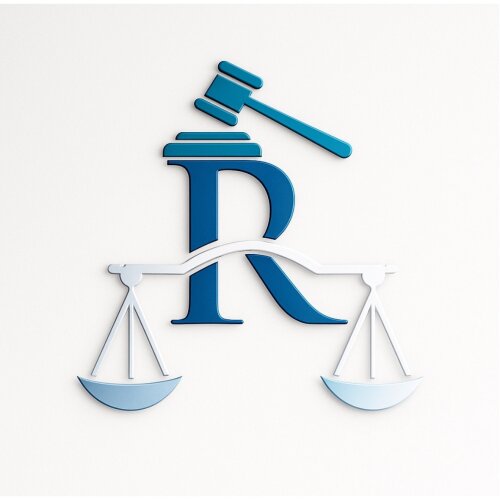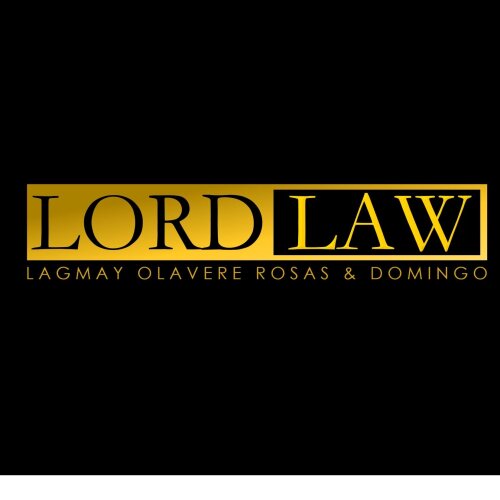- The main law on employment in the Philippines is the Labor Code, as amended by later statutes such as the Batas Kasambahay, the OSH Law, and the Anti-Age Discrimination Law, and it is enforced primarily by the Department of Labor and Employment (DOLE) and the National Labor Relations Commission (NLRC).
- Most employees must have written contracts, clear job descriptions, and probationary status that lasts no longer than 6 months, after which they usually become regular employees if retained.
- Employers must comply with minimum wages, 13th month pay, overtime premiums, night shift differential, SSS, PhilHealth, and Pag-IBIG contributions, as well as various statutory leaves and service incentive leave.
- Termination is highly regulated: employers may dismiss employees only for just or authorized causes, must observe due process, and often must pay separation pay ranging from 0.5 to 1 month salary per year of service for authorized causes.
- Employees can file complaints with DOLE or NLRC, generally within 3 years for monetary claims and 4 years for illegal dismissal, and most labor cases start with mandatory conciliation-mediation.
- Because penalties, back wages, and damages can be large, both employers and employees benefit from early legal or HR expert advice before signing contracts, implementing terminations, or filing cases.
What laws and agencies govern employment in the Philippines?
The main laws governing employment in the Philippines are the Labor Code of the Philippines and its amendments, supplemented by special statutes on wages, safety, social security, and discrimination. The key government agencies are the Department of Labor and Employment (DOLE), the National Labor Relations Commission (NLRC), and social insurance agencies like SSS, PhilHealth, and Pag-IBIG.
Key statutes and regulations
- Labor Code of the Philippines (Presidential Decree 442, as amended) - core rules on hiring, wages, hours of work, termination, unions, and disputes.
- Batas Kasambahay (Republic Act 10361) - rights and benefits of domestic workers.
- Occupational Safety and Health Standards Law (RA 11058) - mandatory safety and health standards, training, and penalties.
- Wage Rationalization Act (RA 6727) - creation of Regional Tripartite Wages and Productivity Boards that set regional minimum wages.
- Anti-Age Discrimination in Employment Act (RA 10911) - prohibits age discrimination in recruitment, promotion, and termination.
- Anti-Sexual Harassment Act (RA 7877) and Safe Spaces Act (RA 11313) - rules on sexual harassment and gender-based harassment at work.
- SSS Act (RA 11199), National Health Insurance Act (RA 7875 as amended), and Pag-IBIG Fund laws - mandatory social security and housing contributions.
- Other special laws: Solo Parents Welfare Act, Magna Carta of Women, Expanded Maternity Leave Law, Paternity Leave Law, etc.
Main authorities and their roles
- DOLE (Department of Labor and Employment)
- Issues labor advisories, regulations, and wage orders.
- Conducts inspections and audits of workplaces.
- Handles complaints on labor standards and some labor relations matters.
- NLRC (National Labor Relations Commission)
- Quasi-judicial body that hears illegal dismissal, money claims, and other labor cases.
- Has Labor Arbiters at first instance and Commission divisions on appeal.
- NCMB (National Conciliation and Mediation Board)
- Facilitates settlement of labor disputes, especially collective bargaining and strikes.
- Regional Tripartite Wages and Productivity Boards (RTWPB)
- Issue regional minimum wage orders.
- SSS, PhilHealth, and Pag-IBIG Fund
- Administer mandatory social contributions and benefits.
How are employment contracts and probationary periods structured in the Philippines?
Employment contracts in the Philippines should clearly state job title, duties, pay, work schedule, and employment status, and many arrangements must be in writing to be enforceable. Probationary employment can last up to 6 months, during which employers must set reasonable standards, after which the employee usually becomes regular if retained.
Types of employment status
- Regular employment - for work that is usually necessary or desirable to the business; regular employees enjoy full security of tenure.
- Probationary employment - trial period not exceeding 6 months from the start of work, with clearly communicated performance standards.
- Project employment - tied to a specific project with a defined duration or scope; ends upon project completion.
- Seasonal employment - work that is seasonal by nature; employees may become regular seasonal if repeatedly rehired.
- Casual employment - work that is not usually necessary or desirable; if the employee works for at least 1 year (even broken service), he or she may gain regular status with respect to that activity.
Essential elements of a compliant employment contract
While the law recognizes verbal employment, written contracts greatly reduce disputes and are crucial for probationary, project, and fixed-term arrangements.
- Full name and address of employer and employee
- Position title and detailed job description
- Place of work and work schedule (days and hours)
- Basic salary, pay frequency, and allowances
- Benefits such as 13th month pay, overtime rules, leaves, and bonuses
- Type of employment (regular, probationary, project, etc.) and starting date
- For probationary:
- Explicit probationary status
- Length of probation (not more than 6 months)
- Specific performance standards and metrics
- For project or fixed-term:
- Project name or description
- Start and end dates or objective determinable end (e.g., upon turnover of project)
Rules on probationary employment
- Maximum of 6 months from the date the employee starts working, unless a longer period is validly agreed for apprenticeship or specialized work allowed by law.
- Employer must communicate performance standards in writing at the start of employment; otherwise, the employee may be deemed regular.
- During probation, the employer may terminate for:
- Just causes (serious misconduct, fraud, etc.), or
- Failure to meet communicated probationary standards.
- If the employee continues working after 6 months with the employer's consent, the employee is usually considered regular.
What wages and mandatory benefits must employers provide in the Philippines?
Employers must at least pay the applicable regional minimum wage, provide 13th month pay, overtime premiums, and government-mandated contributions to SSS, PhilHealth, and Pag-IBIG. They must also grant service incentive leave, statutory maternity and paternity benefits, and comply with wage orders and DOLE regulations.
Minimum wage and wage orders
- Minimum wages are set per region by the RTWPB and issued via wage orders.
- Rates vary by region, industry, and sometimes size of enterprise.
- Non-compliance can lead to back pay, penalties, and administrative sanctions.
Illustrative (not exhaustive) sample of daily minimum wages as of recent wage orders (check the latest DOLE and RTWPB issuances for updates):
| Region / Area | Sector | Approx. Daily Minimum Wage (PHP) |
|---|---|---|
| NCR (Metro Manila) | Non-agriculture | PHP 610 |
| NCR (Metro Manila) | Agriculture / service-retail with 15 or fewer workers | PHP 573 |
| Region III (sample) | Non-agriculture (cities) | PHP 460 - 475 |
| Region VII (sample) | Non-agriculture | PHP 435 - 468 |
Basic pay and common premium payments
- Basic salary - agreed monthly or daily rate, not below minimum wage.
- Overtime pay
- At least 125% of regular hourly rate for work beyond 8 hours per day.
- Night shift differential
- At least an additional 10% of regular wage for work between 10:00 p.m. and 6:00 a.m.
- Rest day pay
- 130% of daily rate when work is performed on the employee's scheduled rest day.
- Holiday pay
- Regular holidays: 200% of daily rate if worked, 100% if unworked but employee is present or on paid leave on the workday immediately before the holiday.
- Special non-working days: 130% of daily rate if worked; "no work, no pay" generally applies if unworked unless company policy provides otherwise.
Mandatory benefits and contributions
| Benefit / Contribution | Who Pays | Typical Rate / Rule | Notes |
|---|---|---|---|
| 13th month pay | Employer | At least 1/12 of basic salary earned in a calendar year | Pay not later than 24 December each year; all rank-and-file employees entitled regardless of salary level. |
| SSS | Employer and employee | Contribution rate of 14% of monthly salary credit (subject to change), shared between employer and employee | Employer withholds employee share and remits both shares monthly. |
| PhilHealth | Employer and employee | Percent of monthly salary (e.g., 5% split equally, subject to annual adjustment) | Provides health insurance coverage. |
| Pag-IBIG Fund | Employer and employee | Employee: usually 1% to 2% of monthly compensation; employer: at least equivalent up to certain ceiling | Housing and savings fund benefits. |
| Service Incentive Leave (SIL) | Employer | At least 5 days paid leave per year after 1 year of service | Convertible to cash if unused at year-end, unless more favorable benefits exist. |
What are the standard working hours, rest periods, and leaves?
The standard work period in the Philippines is 8 hours per day and 40 to 48 hours per week, with required rest periods and at least one rest day per week. Employees are entitled to various leaves including service incentive leave, maternity, paternity, solo parent, and other special leaves under specific laws.
Hours of work and rest
- Normal hours
- Not more than 8 hours per day.
- Time when the employee is required to be on duty or at a prescribed workplace counts as hours worked.
- Meal breaks
- At least 60 minutes unpaid meal break for every 8-hour work day, unless a shorter break is authorized by DOLE for specific industries.
- Rest day
- At least 24 consecutive hours of rest after 6 consecutive work days, typically Sunday.
- Scheduling must consider employee religious preferences "as far as practicable."
- Compressed workweek
- Possible through DOLE-compliant agreements where employees work longer hours per day but fewer days per week, without reducing total weekly work hours or pay.
Key leave entitlements
- Service Incentive Leave (SIL)
- At least 5 days paid leave per year after one year of service.
- Does not apply to certain employees, such as those already enjoying at least 5 days vacation leave, managerial employees, field personnel, and domestic helpers (covered separately by Batas Kasambahay).
- Maternity leave (Expanded Maternity Leave Law - RA 11210)
- 105 days paid maternity leave for live childbirth, regardless of civil status and employment status.
- Additional 15 days for solo mothers.
- 7 days may be transferred to the child's father or an alternate caregiver, subject to conditions.
- Funded mainly by SSS; employers have specific obligations on pay and reimbursement.
- Paternity leave
- 7 days with full pay for the first 4 deliveries or miscarriages of the lawful wife with whom the husband is cohabiting.
- Solo parent leave (Solo Parents Welfare Act, as amended)
- At least 7 work days of parental leave per year for qualified solo parents, subject to 1 year of service and compliance with requirements.
- Special leaves for women
- Gynecological surgery leave: 2 months with full pay for female employees who undergo surgery due to gynecological disorders, subject to conditions.
- Violence Against Women and their Children (VAWC) leave: up to 10 days paid leave for victims, extendible in some cases.
- Special non-working days and holidays
- Employees may be required to work but earn holiday or special day premiums.
When can an employer legally terminate an employee in the Philippines?
An employer may legally terminate an employee only for just causes related to the employee's fault or for authorized causes such as redundancy or retrenchment, and must follow procedural due process. Unlawful termination exposes the employer to reinstatement orders, back wages, and damages.
Just causes for termination
These are grounds attributable to the employee's wrongful acts or omissions under the Labor Code.
- Serious misconduct or willful disobedience of lawful orders
- Gross and habitual neglect of duties
- Fraud, willful breach of trust, or loss of confidence (especially for positions of trust)
- Commission of a crime or offense against the employer, family, or representatives
- Other analogous causes (e.g., gross inefficiency, conflict of interest) recognized by jurisprudence
Authorized causes for termination
These are business-related or health-related reasons not due to the employee's fault.
- Installation of labor-saving devices
- Redundancy
- Retrenchment to prevent losses
- Closure or cessation of business operations
- Disease that cannot be cured within 6 months as certified by a competent public health authority and where continued employment is prohibited by law or prejudicial to health
Procedural due process requirements
- For just causes ("two-notice rule")
- Serve a first written notice that states the specific acts complained of and gives the employee a chance to explain in writing.
- Provide the employee a reasonable period (often at least 5 calendar days) to submit an explanation and, if appropriate, attend a hearing or conference.
- Serve a second written notice of decision stating that termination is being imposed and the grounds relied upon.
- For authorized causes
- Serve written notice to both the employee and the DOLE at least 30 days before the intended date of termination.
- Pay separation pay where required.
Separation pay rules
| Ground | Separation Pay |
|---|---|
| Installation of labor-saving devices | At least 1 month pay or 1 month pay per year of service, whichever is higher |
| Redundancy | At least 1 month pay or 1 month pay per year of service, whichever is higher |
| Retrenchment to prevent losses | At least 0.5 month pay per year of service |
| Closure or cessation not due to serious business losses | At least 0.5 month pay per year of service |
| Closure due to serious business losses | No separation pay required, but employer must prove losses |
| Termination due to disease | At least 0.5 month pay per year of service |
For illegal dismissal, the general remedies are reinstatement without loss of seniority rights and payment of back wages, or separation pay in lieu of reinstatement plus back wages, depending on the case.
What are the rules on 13th month pay, bonuses, and other monetary benefits?
13th month pay is mandatory for all rank-and-file employees in the Philippines, while bonuses beyond that are generally discretionary unless provided by law, contract, or long-standing company practice. Employers must clearly document how they compute these payments and when they are due.
13th month pay
- Coverage - All rank-and-file employees in the private sector who have worked for at least one month in a calendar year.
- Computation
- At least 1/12 of the basic salary earned within the calendar year.
- Some allowances and benefits may be excluded depending on classification as "basic wage" or not.
- Deadline of payment - Not later than 24 December of every year.
- 13th month pay is separate from year-end or Christmas bonuses which are usually discretionary.
Bonuses and company benefits
- Discretionary bonuses
- Not required by law but many employers grant them as incentives.
- If bonuses become fixed, regular, and consistent over time, they may be considered part of wage or a company practice that cannot be unilaterally withdrawn.
- Profit-sharing and commissions
- Governed by contract; may be considered part of wage if they are guaranteed and regular.
- Non-cash benefits
- Such as meals, lodging, or transportation; these have specific rules on whether they form part of wage.
How are workplace health, safety, and harassment regulated?
Workplace health and safety in the Philippines are governed by the OSH Law and DOLE safety standards, which require employers to provide a safe work environment, conduct OSH training, and report accidents. Harassment is regulated by the Anti-Sexual Harassment Act and Safe Spaces Act, which require employers to prevent and address sexual and gender-based harassment.
Occupational safety and health (OSH) obligations
- Identify and control workplace hazards through safety programs and risk assessments.
- Appoint safety officers and create OSH committees as required by DOLE, depending on company size and industry.
- Provide personal protective equipment (PPE) at no cost to employees where needed.
- Conduct mandatory OSH orientation and training for workers and supervisors.
- Report work-related accidents, illnesses, and fatalities to DOLE within prescribed time frames.
- Post safety signage and maintain emergency plans and equipment (e.g., fire exits, first aid kits).
Non-compliance can result in administrative fines, work stoppage orders, and potential liability for damages in case of accidents.
Anti-harassment and safe workplace rules
- Anti-Sexual Harassment Act (RA 7877)
- Covers persons in authority, influence, or moral ascendancy who demand or request sexual favors in the workplace.
- Employers must prevent or deter sexual harassment and provide procedures for resolution and investigation.
- Safe Spaces Act (RA 11313)
- Covers gender-based sexual harassment in workplaces, public spaces, online, and educational institutions.
- Requires employers to adopt a code of conduct, policies, and internal mechanisms to address harassment.
- Mandates creation of an internal committee to receive and investigate complaints.
How are labor disputes and complaints handled in the Philippines?
Labor disputes are handled either through DOLE (for labor standards and some conciliation) or through the NLRC (for illegal dismissal, money claims, and most labor relations cases), typically starting with conciliation-mediation. Employees usually must file monetary claims within 3 years and illegal dismissal cases within 4 years from the cause of action.
Common types of labor disputes
- Illegal dismissal or constructive dismissal
- Unpaid wages, overtime, and premium pay
- Non-payment of 13th month pay and benefits
- Underpayment relative to minimum wage orders
- Unpaid separation pay or retirement pay
- Harassment and discrimination claims (often tied to other labor claims)
Where to file and basic process
- DOLE Regional/Field Office
- Handles complaints on labor standards (wages, benefits, OSH) through:
- Single Entry Approach (SEnA) conciliation-mediation, and
- Labor inspection and compliance orders.
- Often the first stop for employees with pay or benefits issues.
- Handles complaints on labor standards (wages, benefits, OSH) through:
- NLRC (Labor Arbiter)
- Handles illegal dismissal and claims for reinstatement, separation pay, back wages, and other money claims.
- Filing generally requires a verified complaint and payment of minimal docket fees for certain money claims (indigents may be exempt).
Typical steps in an NLRC labor case
- Filing of complaint with the appropriate NLRC Regional Arbitration Branch.
- Docketing and summons to the employer.
- Mandatory conciliation-mediation conference where the parties try to settle.
- Submission of position papers and documentary evidence by both sides.
- Clarificatory hearings if needed.
- Decision by the Labor Arbiter.
- Appeal to the NLRC Commission within 10 calendar days from receipt of the decision (for the employer appealing a monetary award, often with a requirement to post a bond equivalent to the monetary award).
- Further review via petition to the Court of Appeals and possibly to the Supreme Court on questions of law.
Prescriptive periods (deadlines to file)
- Money claims arising from employer-employee relations - 3 years from the time the cause of action accrued.
- Illegal dismissal - generally 4 years from dismissal or constructive dismissal.
- Offenses under the Labor Code - 3 years, in many cases.
Indicative costs of pursuing a case
| Item | Indicative Cost (PHP) | Notes |
|---|---|---|
| Filing / docket fees at NLRC | Often minimal (e.g., a few hundred pesos), may increase with large monetary claims | Indigent complainants can seek exemption. |
| Lawyer's acceptance fee | PHP 20,000 - 80,000+ for basic cases | Varies widely by complexity, region, and lawyer experience. |
| Contingency arrangements | 20% - 30% of monetary award | Common for employee-side counsel in money claims and illegal dismissal cases. |
| Company-side monthly retainer | PHP 30,000 - 150,000+ per month | For ongoing HR and labor advisory, usually for businesses with recurring HR issues. |
When should you hire a Philippine labor lawyer or HR expert?
You should involve a labor lawyer or HR expert early when you face complex hiring, restructuring, or termination decisions, or when a dispute is likely or already brewing. Early advice often prevents costly errors that lead to illegal dismissal findings, back wages, and penalties.
Situations where employers should seek help
- Drafting or revising standard employment contracts, employee handbooks, and company policies.
- Designing probationary evaluation systems and performance management processes.
- Planning redundancies, retrenchments, or business closures, especially when multiple employees are affected.
- Investigating employee misconduct, harassment complaints, or policy violations.
- Preparing notices and documentation for termination based on just or authorized causes.
- Facing DOLE inspections, compliance orders, or NLRC complaints.
Situations where employees should seek help
- Receiving termination notices or being asked to sign resignation letters, quitclaims, or waivers.
- Experiencing significant pay cuts, demotions, or hostile treatment that may amount to constructive dismissal.
- Not receiving minimum wage, overtime pay, 13th month pay, or statutory benefits.
- Experiencing harassment, discrimination, or unsafe work conditions.
- Considering settlement offers and wanting to understand if they are fair.
How to choose the right adviser
- Look for strong experience specifically in Philippine labor law and litigation or HR practice.
- Ask about their experience with your industry (BPO, manufacturing, retail, domestic work, etc.).
- Clarify fee structures (fixed, hourly, contingency, or retainer) before engagement.
- For businesses, consider a combination of in-house HR with external counsel for complex or high-risk matters.
What practical next steps should employers and employees take?
Employers should audit their current contracts, policies, and practices for compliance with the Labor Code and DOLE issuances, while employees should organize their documents and timelines before raising issues or filing complaints. Both sides should prioritize documentation, communication, and early consultation with HR or legal experts.
Immediate action points for employers
- Review employment contracts and HR policies
- Check that contracts specify status, pay, duties, hours, and probationary standards.
- Align company handbook with the latest DOLE advisories and applicable special laws.
- Audit wages and benefits
- Verify compliance with regional minimum wages and 13th month pay.
- Ensure accurate computation and remittance of SSS, PhilHealth, and Pag-IBIG contributions.
- Strengthen documentation and processes
- Implement clear performance evaluation and disciplinary procedures.
- Document incidents, counseling, warnings, and evaluations to support any later decisions.
- Implement OSH and anti-harassment programs
- Form OSH committees and internal anti-harassment bodies as required.
- Conduct regular training and maintain complaint channels.
- Build a relationship with a labor lawyer or HR consultant
- Consider at least an annual review of HR practices to reduce legal exposure.
Immediate action points for employees
- Collect and organize documents
- Employment contract, company handbook, payslips, time records, notices, and emails or messages related to work issues.
- Track dates and events
- Make a timeline of hiring, evaluations, incidents, warnings, and termination or resignation events.
- Raise issues internally first where safe
- Discuss wage or benefits issues with HR or immediate supervisor, if possible.
- Seek external help if unresolved
- Contact DOLE for labor standards concerns or consult a lawyer or union for termination and complex disputes.
- Act within legal time limits
- Aim to consult an adviser promptly to avoid missing the 3-year or 4-year prescriptive periods.
Using these steps as a checklist helps both employers and employees align with Philippine labor law, reduce conflict, and address problems quickly and effectively.





